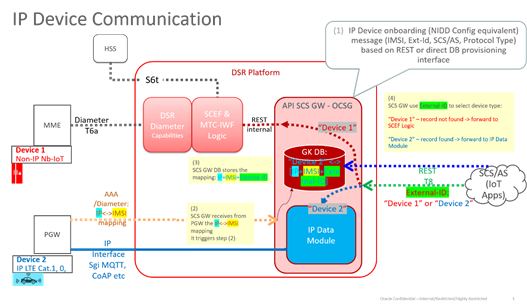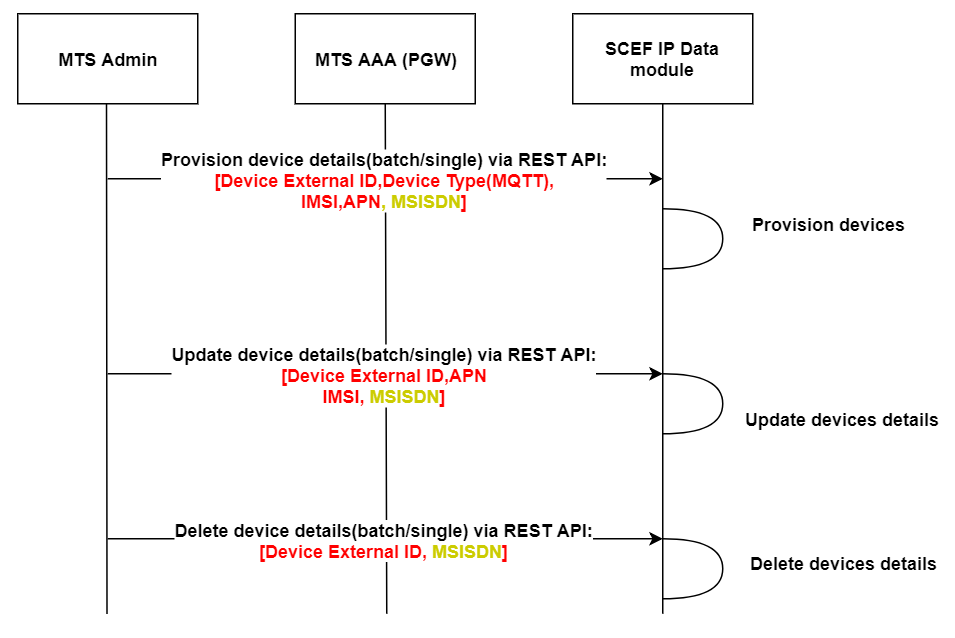| Oracle® Communications Diameter Signaling Router Service Capability Exposure Function User's Guide Release 8.4 F12301-02 |
|
 Previous |
 Next |
| Oracle® Communications Diameter Signaling Router Service Capability Exposure Function User's Guide Release 8.4 F12301-02 |
|
 Previous |
 Next |
IP Device Provisioning
Operator need to provision devices in MQTT broker before the device connects to broker.
Refer to the Sample json Body for more details.
ExternalId takes
precedence)
If both External Id and MSISDN are provided, then the External Id is given priority and the devices matching the External Id is updated. Only in the absence of External Id, the MSISDN is considered. Refer to the Sample json Body for more details.
Topic prefixes
Topic prefixes are predetermined prefixes for a given application, which do not contain any wild cards (# or +). The topic names used in subscription and publish message (from application or device) should have a valid prefix.
For example: a/b/c and a/b/c/1 are not allowed.
Note:
Topic prefixes are different from Topic name mentioned for rate control.For example:
Topic prefix:
/oracle/india
Topic name in Rate control section:
/oracle/india/bangalore/*
AAA Server Integration
Figure 2-23 SCEF MQTT Broker - AAA Server Integration

Figure 2-24 SCEF MQTT Broker device provisioning

APN Rate Control, ACL Check for MQTT traffic
APN and ACL checks are applied on the North bound T8 traffic (NIDD Downlink data delivery, ME subscription). These checks are applied only when device id (ExternalId or MSISDN) is present in the T8 the request.
Note:
Device Id is not mandatory in case of NIDD Downlink Data Delivery (DLD) broadcast to all devices subscribed to the topic and ME subscription POST message.Configuration of APN and ACL per application performed as part of Custom SLA configuration.
APN Check
Input: Configured APN names allowed per application. Device APN is checked against configured APN list per application.
Rule: Check if the device APN is allowed for the application.
ACL Check
Input: Configured Domain names or MSISDN ranges allowed per application
Rule: If message has the device External Id, check the domain name against the configured list per application. If the message has MSISDN then check against the configured MSISDN ranges for the application.
Note: If both the ExternalId and MSISDN are present, then ExternalId is checked and MSISDN is ignored.
APN Rate control
APN Rate control is applied per device. Rate control is configurable at MQTT MBean GUI at OCSG Admin portal.
APN rate control check is performed for MQTT CONNECT, SUBSCRIBE, PUBLISH to or from devices.
DB Auditor
MQTT broker has the DB auditor functionality enabled to clear old records after configurable period. The tables that needs to be audited are configured in MBean operation.